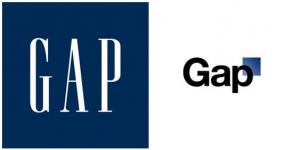Hi everyone,
The Newsletter Is Online – if you’d like a printable version simply click this link.
 This week we focus on how to tell your story – and I offer a special invitation to have your story included in my next book. I sincerely hope you take me up on the offer – that would be fun!
This week we focus on how to tell your story – and I offer a special invitation to have your story included in my next book. I sincerely hope you take me up on the offer – that would be fun!
Ps. If you want to go deeper on this topic, we have a whole chapter with 10 steps to beefing up your brand in Craft Business Power. As it happens Amazon is running a promotion for that book right now – you can snag an ebook copy for .99 cents today – it goes up in price tomorrow. If you don’t have a Kindle you can still read it via the Kindle App for PC, MAC, Tablets, and Smartsphones.
Here is the full text as a blog post:
– – – – – – – – – – – – – – – – – – – – –
The Art Of Telling Your Story
In last week’s newsletter we looked at the work of David Ogilvy, the father of modern advertising methods. This week we’ll zero-in on one of his most compelling ideas and figure out how to apply it to a craft business. He said, (with a bit of tweaking from me so it applies to our industry),
“There isn’t any significant difference between the various brands of …cake mixes, whiskey, detergents, or doll clothes… The doll clothes maker who dedicates her advertising to building the most sharply defined personality for her brand will get the largest share of the market at the highest profit.”
Your Story Well Told
So the question that comes to mind is how exactly do you create a “sharply defined personality” for your brand?
One of the simplest ways to infuse your brand with personality is to identify, clarify, and frequently communicate YOUR personal story.
When people bond with you – they bond with your brand
As craft sellers trying to stand out there are two tracks you can create that prospects can follow. Track one is your personal story. Track two is your businesses story or personality. If you’re just starting out – be sure to get your personal story documented properly. Get it well developed and treat it like the cornerstone of your brand.
Crafting your story can be a real struggle. You’ll feel unsure of yourself, uneasy about how you word things, question your motives, reconsider your phrases, and rework your drafts over and over. That’s okay. Keep at it. Continue to refine and clarify your story. Document it consistently in all the online sites you occupy.
2 Types Of Descriptor Statements
One way to do this is to have a powerful descriptor statement. That’s a statement that describes who you are and what you’re all about.
You want a short version of the statement, (4 or 5 sentences long) for use in situations that call for a brief statement.
You also want a longer descriptor statement (as long as you’d like) for use on your “About Me” pages and situations that call for a longer amount of content.
A descriptor statement is how people find out who you are, what you’re all about, and whether they can relate to you or not. Let’s look at our example of Cinnamon’s short descriptor statement.
Example: Cinnamon’s Short Story
Here is what we say about her on our websites:

4 Types Of Credibility Indicators
When you tell your story you want to include your best credibility indicators. A credibility indicator is any type of fact that implies you are a credible expert or recognized seller in your field. There are lots of ways to get and then use credibility indicators. Creatively look for them as you work to build your personal brand.
One caution, saying, “I’ve sewn for 40 years” doesn’t convey credibility – yet lots of online seamstresses like that phrase. Lots of people sew badly their entire lives, so it’s not a good phrase to use.
#1 – Who You Learned From
Did you learn from someone special, or did someone special inspire you? Even including a phrase like, “I was inspired originally by the work of Bob Mackie” can have a powerful impact.
#2 – Who You Work For
Do you have a customer base made up of credible people? Even saying a phrase like, “I design for and sell to the doll collector community of Indianapolis” is a powerful statement because it provides context.
#3 – Who You Associate With
Cinnamon became the brand ambassador for Bernina because we entered her in a contest (that only had three other entrants) and she won. Sometimes good credibility indicators come along in very ordinary ways.
#4 – Who’s Featured Your Work
Has your work been featured by a prominent magazine, website, book, or TV Show? These are natural credibility indicators. Want that opportunity? …
Be Featured In My Next Book
In my next book, Internet Marketing Power, I’m going to feature work-from-home entrepreneurs. If you’d like to write your short descriptor statement (4 or 5 sentences long) and send it to me I’ll include it in the book. Or you can simply leave it as a comment on this blog post and indicate that you want to be included. The deadline to participate is June 15, 2014. After the book comes out you can begin saying, “I’ve been featured in the bestselling book, Internet Marketing Power”as one of your credibility indicators. Cool right?!
Tell Us What You Think!
What’s your opinion on this topic? Have you seen it done well, (or poorly), and want to share that example? Tell us what you think!
Jason & Cinnamon







